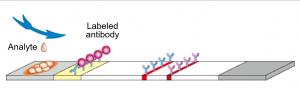Many people say that the quality of air we breathe is becoming worse day by day. Do you also think this is true? Surprisingly, the amount of fine dust in the air has decreased dramatically compared to the past. In the past, masks were seen mostly during the spring due to the yellow dust. However, now, they can be easily seen no matter what season it is, or how clear the sky looks. The most valid reason for such a trend is fine dust. Fine dust became a serious problem a few years ago. Why has it become a big problem nowadays when it was worse back in the past? The main reason is that the fine dust was carried in wester winds from China to South Korea and thus, our phone alarms were set off by the government warnings about the fine dust. Ever since we knew about the existence of fine dust and its threat, it is something we have to deal with all the time. Some parents in South Korea even made a choice to move to regions like Jeju Island or Gangwon-do, where they are believed to have less amount of fine dust relative to other places, to prevent their children from the danger of fine dust. In the mask market, large numbers of people started to buy a better model of mask epidemically for more efficient protection. Fear of the fine dust is increasing rapidly, but, do you know what it is and how it really affects us?
Fine dust consists of tiny particles with diameters of less than 10 micron, e.g. soot from diesel vehicles or incinerators. It is a potential cause for respiratory diseases and increases the risk of cancer. Not only does it affect our respiratory system, but it affects almost every single part of our body. Fine dust causes
- Irritation of our eyes
- Disruption of circulation in the uterus which then leads to the lack of nutrition to the fetus.
- Arrhythmia [1]due to the increase of oxidation stress.
- Expansion of skin pores, dermatitis [2]and allergy.
- Creation of thrombus [3]that damages the cells which might end up with stroke or dermatitis.
Fine dust only does harm and no good to us. However, there is no way for us to avoid it perfectly and little amounts of fine dust does not have huge impacts on our body. Then, when do we need to take actions to avoid the dangers of fine dust? WHO(World Health Organization) made a WHO Air Quality Guideline which shows the advice standard for fine dust and the number of deaths caused by air pollution. WHO divided the standard of fine dust into 4 levels of ‘Air Quality Guideline’(highest quality of air), interim target-3, interim target-2, interim target-1. In South Korea’s case, they now follow the interim target-3 which was updated in 2018. They classify the levels of the fine dust into ‘normal’, ‘good’, ‘bad’ and ‘very bad’.
Why do the standards differ when people’s resistance to the fine dust does not? These standards are all made by each country’s government. They can change elastically if the government choose to do so like the case of South Korea last year. This means that there is no specific reason for the standard as it only depends on the government’s expectation of the air. People of South Korea complained about the decision by the government for not following the ‘Air quality guideline’ of WHO. The Ministry of Environment explained that if they were to change the standard to the WHO’s, South Korea will always show ‘Bad’ and it is only going to increase the worries of the people. It is quite true as only about 10% of the world’s population live in the condition of safe air but such a vague answer only made the citizens suspicious of the standards. I personally think that there is a need for a more specific standard and guideline for our actions for the fine dust.
Despite the fact that we only see news that reports about the bad quality of air, there has been efforts to reduce the amount of fine dust. There are limitations for the factories like coal-fired electrical power plants and the government had provided subsidies for hybrid cars and the electric vehicles. The government also shared its technique to decrease ambient air pollution with China and cooperated together to solve the fine dust problem practically. However, putting in efforts does not mean good results. ‘China’ and ‘Fine dust’ were the two keywords that we encountered the most in the media recently. In January, there were days when our phones were spammed with fine dust alerts by the Ministry of Environment. Recent research by the government showed that 75% of the fine dust was from China on those days. To solve the main problem of the fine dust, it seems that dealing with the Chinese government is the number one priority for the Korean government.
China, a single nation where the world’s largest population lives is also a place for the most number of factories. As its economy has grown in size, the number of cars increased as well. Factories and the increase of cars caused air pollution in China to affect South Korea badly. The picture on the left is the sky of Beijing taken on November 6, when the sky was blue during the APEC summit 2014, and on November 19 when the smog returned. The Chinese government had restricted cars and factories to allow such a blue sky. Like the case of South Korea and China, air pollution is not a problem within a country. It is a global problem that all the countries should be aware of. ‘APEC blue’ had shown the potential of clean air although it lasted a very short time. China, even though it is one of the countries that makes the greatest amount of air pollution, is not the only country ruining the air. All the countries have done so. To solve the fine dust problem, furthermore, the air pollution problem, it is important for us to make sure that if we make the environment sick, we are also going to be sick. Governments should make policies on reducing the fine dust and the other causes of the air pollution. Development is important but, we should know that our mother nature is important too. We humans have caused the air pollution, and now, we should make it green again.
출처:
WHO official website, Air Quality Guideline, https://www.who.int/airpollution/en/
Official blog of the Ministry of the Environment of South Korea, https://blog.naver.com/mesns/
Johan van de Ven, APEC Blue: Looking Behind the Blue Sky, China current, Nov 12, 2014 , http://en.cncurrent.com/apec-blue-the-self-awareness-anxiety-and-discomforts-hidden-under-the-blue-sky/
[1] any variation from the normal rhythm in the heartbeat
[2] Dermatitis is a medical condition which makes your skin red and painful.
[3] a clot of coagulated blood that forms within a blood vessel or inside the heart and remains atthe site of its formation, often impeding the flow of blood Compare embolus
Ha JungYoon ha980311@gmail.com
<저작권자 © 홍익대영자신문사, 무단 전재 및 재배포 금지>





